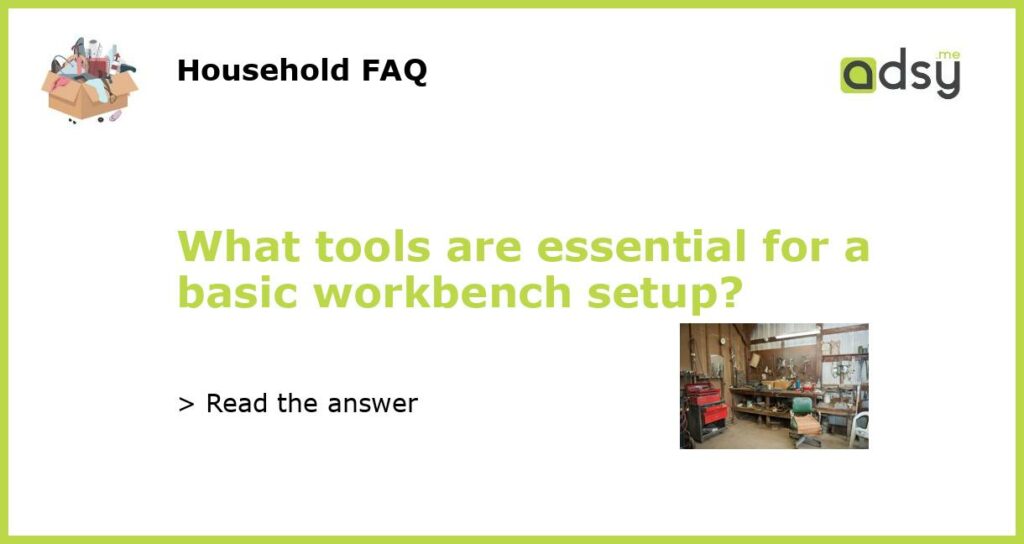Essential Tools for a Basic Workbench Setup
Whether you are a professional woodworker or a DIY enthusiast, having a well-equipped workbench setup is essential for any project. A well-stocked workbench not only makes your work more efficient but also ensures safety and precision. Here are five essential tools you should have in your basic workbench setup:
A solid workbench
The foundation of any workbench setup is, of course, the workbench itself. Invest in a sturdy and well-built workbench that can withstand heavy-duty projects. Look for a workbench made of solid wood or heavy-duty steel with a thick, stable work surface. Consider the size of the bench and ensure it provides enough workspace for your projects.
Essential hand tools
No workbench setup is complete without a collection of basic hand tools. These tools allow you to work on various tasks, from measuring and marking to cutting and fastening. Some essential hand tools to have in your workbench setup include:
- Measuring tools such as a tape measure, combination square, and marking gauge.
- Cutting tools like a handsaw, coping saw, and utility knife.
- Fastening tools including a hammer, screwdrivers, and clamps.
- Filing and sanding tools like a set of files, sandpaper, and a block plane.
Power tools
In addition to hand tools, power tools are a must-have for any workbench setup. Power tools not only save time and effort but also allow you to tackle more complex projects. Depending on your needs and budget, consider adding some of the following power tools to your workbench setup:
- Power drill: A versatile tool for drilling holes and driving screws.
- Circular saw: Ideal for cutting large sheets of wood or making straight cuts.
- Jigsaw: Great for cutting curves and intricate shapes.
- Router: Essential for creating decorative edges and joints.
- Random orbital sander: Perfect for achieving a smooth and even finish.
- Table saw: A more advanced tool for precise and accurate cuts.
Safety equipment
Safety should always be a top priority in any workbench setup. Make sure you have the necessary safety equipment to protect yourself from accidents or injuries. Some essential safety equipment to have in your workbench setup include:
- Safety glasses: Protect your eyes from flying debris or dust.
- Hearing protection: Keep your ears safe from loud noises produced by power tools.
- Dust mask: Prevent inhalation of harmful dust particles.
- Gloves: Provide extra grip and protect your hands from sharp objects.
- Fire extinguisher: Be prepared for any potential fire hazards.
Storage and organization solutions
Finally, keeping your workbench well-organized is essential for a productive and efficient workspace. Invest in storage and organization solutions that suit your needs and help you keep your tools and materials in order. Some useful storage options to consider for your workbench setup include:
- Tool chest or toolbox: Keep your hand tools organized and easily accessible.
- Pegboard or wall-mounted tool rack: Display your most frequently used tools for quick and easy access.
- Tool cabinets or drawers: Store power tools and larger hand tools securely.
- Shelving or bins: Hold materials and supplies neatly.
- Labeling system: Clearly label your tools and storage containers for easy identification.
No matter the size or complexity of your projects, having a well-equipped workbench setup is essential. With these essential tools, you’ll be ready to tackle any woodworking or DIY project that comes your way.






